I've been experimenting with the image bicubic resampling algorithm present in the AForge framework with the idea of introducing something similar into my image processing solution. See the original algorithm here and interpolation kernel here
Unfortunately I've hit a wall. It looks to me like somehow I am calculating the sample destination position incorrectly, probably due to the algorithm being designed for Format24bppRgb images where as I am using a Format32bppPArgb format.
Here's my code:
public Bitmap Resize(Bitmap source, int width, int height)
{
int sourceWidth = source.Width;
int sourceHeight = source.Height;
Bitmap destination = new Bitmap(width, height, PixelFormat.Format32bppPArgb);
destination.SetResolution(source.HorizontalResolution, source.VerticalResolution);
using (FastBitmap sourceBitmap = new FastBitmap(source))
{
using (FastBitmap destinationBitmap = new FastBitmap(destination))
{
double heightFactor = sourceWidth / (double)width;
double widthFactor = sourceHeight / (double)height;
// Coordinates of source points
double ox, oy, dx, dy, k1, k2;
int ox1, oy1, ox2, oy2;
// Width and height decreased by 1
int maxHeight = height - 1;
int maxWidth = width - 1;
for (int y = 0; y < height; y++)
{
// Y coordinates
oy = (y * widthFactor) - 0.5;
oy1 = (int)oy;
dy = oy - oy1;
for (int x = 0; x < width; x++)
{
// X coordinates
ox = (x * heightFactor) - 0.5f;
ox1 = (int)ox;
dx = ox - ox1;
// Destination color components
double r = 0;
double g = 0;
double b = 0;
double a = 0;
for (int n = -1; n < 3; n++)
{
// Get Y cooefficient
k1 = Interpolation.BiCubicKernel(dy - n);
oy2 = oy1 + n;
if (oy2 < 0)
{
oy2 = 0;
}
if (oy2 > maxHeight)
{
oy2 = maxHeight;
}
for (int m = -1; m < 3; m++)
{
// Get X cooefficient
k2 = k1 * Interpolation.BiCubicKernel(m - dx);
ox2 = ox1 + m;
if (ox2 < 0)
{
ox2 = 0;
}
if (ox2 > maxWidth)
{
ox2 = maxWidth;
}
Color color = sourceBitmap.GetPixel(ox2, oy2);
r += k2 * color.R;
g += k2 * color.G;
b += k2 * color.B;
a += k2 * color.A;
}
}
destinationBitmap.SetPixel(
x,
y,
Color.FromArgb(a.ToByte(), r.ToByte(), g.ToByte(), b.ToByte()));
}
}
}
}
source.Dispose();
return destination;
}
And the kernel which should represent the given equation on Wikipedia
public static double BiCubicKernel(double x)
{
if (x < 0)
{
x = -x;
}
double bicubicCoef = 0;
if (x <= 1)
{
bicubicCoef = (1.5 * x - 2.5) * x * x + 1;
}
else if (x < 2)
{
bicubicCoef = ((-0.5 * x + 2.5) * x - 4) * x + 2;
}
return bicubicCoef;
}
Here's the original image at 500px x 667px.
And the image resized to 400px x 543px.
Visually it appears that the image is over reduced and then the same pixels are repeatedly applied once we hit a particular point.
Can anyone give me some pointers here to solve this?
Note FastBitmap is a wrapper for Bitmap that uses LockBits to manipulate pixels in memory. It works well with everything else I apply it to.
Edit
As per request here's the methods involved in ToByte
public static byte ToByte(this double value)
{
return Convert.ToByte(ImageMaths.Clamp(value, 0, 255));
}
public static T Clamp<T>(T value, T min, T max) where T : IComparable<T>
{
if (value.CompareTo(min) < 0)
{
return min;
}
if (value.CompareTo(max) > 0)
{
return max;
}
return value;
}


